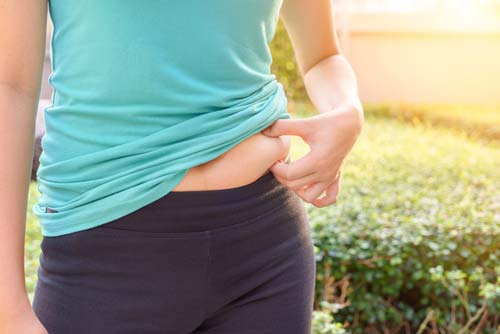Nobody likes belly fat. Many of us have tried in vain for years to get rid of it.
And it’s about far more than vanity. The midsection is the unhealthiest place to carry extra weight. Belly fat is linked to heart disease, diabetes, metabolic syndrome, and other serious health conditions.
Now, a new study shows that one vitamin may help you reduce your “spare tire.”
Researchers in Holland analyzed health data from over 6,000 people. The participants were men and women from 45 to 65 years old. The majority of them were overweight.1
The researchers wanted to find out if “abdominal subcutaneous adipose tissue” (also known as belly fat) was associated with a vitamin deficiency.
Lack of Vitamin D Linked to Belly Fat
To get the most accurate findings, the researchers adjusted for other factors that affect weight around the midsection, like chronic diseases, alcohol intake, and exercise levels.
The researchers found that for both men and women, low levels of vitamin D were strongly linked to belly fat.2
Rachida Rafiq is a doctoral student in the department of internal medicine at the VU Medical Center in Amsterdam. She was the study’s lead author.
Rafiq said her research found a “strong relationship between increasing amounts of abdominal fat and lower levels of vitamin D. This strong association may point to a possible role for vitamin D in abdominal fat storage.”
She added that “individuals with larger waistlines… should consider having their vitamin D levels checked.”
The study recently was presented at the European Society of Endocrinology.
The Right Way to Get Vitamin D
Vitamin D doesn’t just help you avoid belly fat. Studies show it fights cancer, heart disease, and osteoporosis. It also boosts immunity.3
Many of us don’t get nearly enough of this crucial vitamin. One study found that more than 40% of Americans are deficient.4
Have your doctor check your vitamin D level. It is a simple blood draw.
If your reading is less than 20 ng/mL you are deficient. Optimal levels are in the 40-60 ng/mL range.
Your body produces vitamin D when your skin is exposed to sunlight. Try to get 15 minutes of sun each day with your arms and legs exposed.
If you can’t increase your sun exposure, take a quality supplement. We recommend 5,000 IUs a day.
Make sure you buy the D3 form, not D2. D3 is more easily absorbed by your body. It will increase your levels more than twice as much as D2 will.
One more thing…
Your body needs magnesium to metabolize vitamin D. So make sure you’re getting enough by eating plenty of magnesium-rich foods. Good sources include wild-caught, cold-water fish, nuts, seeds, leafy greens, and quinoa.
Editor’s Note: What’s the secret to lasting weight loss? Here’s a hint: It has NOTHING to do with willpower… Discover why 93% of The Biggest Loser contestants gain back all the weight they lost on the show (and more)…why “cheat meals” actually help burn fat…and the little-known hormone that unlocks your true weight-loss potential.
Get all the details HERE.
Like this Article? Forward this article here or Share on Facebook.
References:
1 https://www.ese-hormones.org/media/1504/larger-waistlines-are-linked-to-higher-risk-of-vitamin-d-deficiency.pdf
2 https://www.eurekalert.org/pub_releases/2018-05/esoe-lwa051718.php
3 https://www.medicalnewstoday.com/articles/321851.php
4 https://www.medicalnewstoday.com/articles/321851.php

